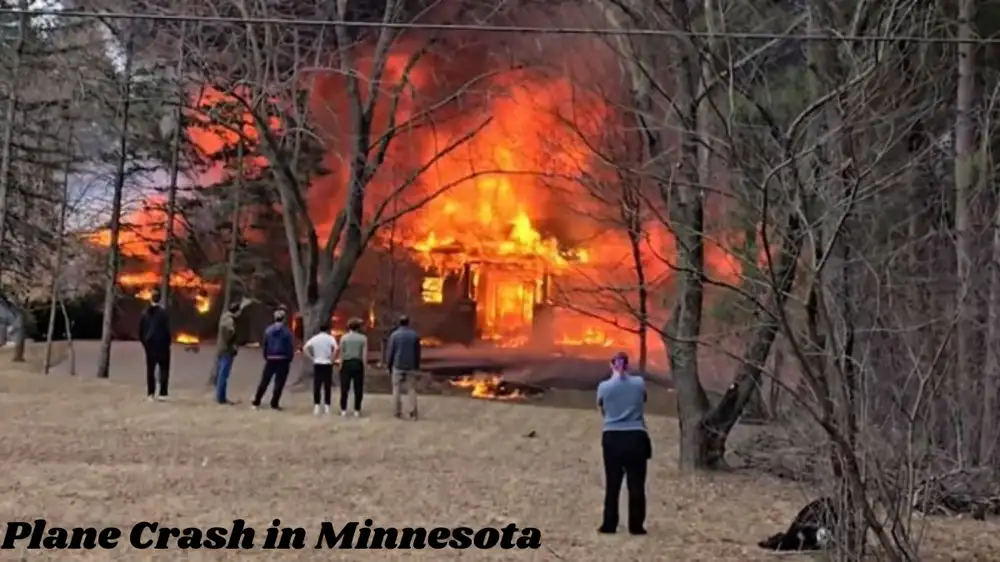Latest NEWS
The Big Myanmar-Thailand Earthquake: What Happened and Why It Matters

On March 28, 2025, a huge Myanmar-Thailand earthquake shook. It was very strong (7.7 magnitude) and killed over 1,000 people. Buildings fell, roads broke, and many were hurt. The earthquake started near Mandalay, Myanmar, but even Bangkok, Thailand’s big city, felt it. This article explains why it happened, how people were affected, and what we can learn.
1. What happened?
When and Where:
- The earthquake hit at 12:50 p.m. near Mandalay, Myanmar.
- It was shallow (only 10 km deep), making the shaking worse.
- A smaller earthquake (6.4 magnitude) happened 12 minutes later.
Damage and Deaths:
- Myanmar: Over 1,000 died. Old bridges, hospitals, and temples broke. Many lost homes.
- Thailand: 10 died in Bangkok. A tall building under construction fell, trapping workers.
People shared videos of shaking buildings, dust everywhere, and rescue teams digging through rubble.
2. Why Do Earthquakes Happen Here?
The Ground Is Moving:
- Myanmar sits where four giant rock pieces (tectonic plates) meet. These pieces move and crash, causing earthquakes.
- The Sagaing Fault (a crack in the earth) runs through Myanmar. It’s like California’s San Andreas Fault.
Bangkok’s Surprising Danger:
- Bangkok is far from the earthquake’s start, but its soft, wet soil made shaking worse.
- Many buildings there are old and not built to survive earthquakes.
3. People’s Suffering and Rescue Problems
Myanmar’s Double Trouble:
- Myanmar was already in a civil war. Fighting made it hard to help earthquake victims.
- Hospitals were full. Blood and medicine ran out.
Bangkok’s Panic:
- A fallen building site became a symbol of the disaster. People heard cries for help under the rubble.
- The city stopped trains and buses as scared people filled the streets.
4. How the World Helped
Countries Gave Money and Supplies:
- The United Nations gave 5 million. China sent 5 million. 13.7 million in aid.
- Myanmar’s military government, which usually refuses help, asked for support this time.
Rescue Challenges:
- Broken roads and political fights slowed help.
- In Bangkok, traffic jams blocked ambulances and rescue trucks.
5. What Can We Learn?
Build Better:
- Use stronger materials for buildings. Follow earthquake-safe rules.
- Fix old buildings to make them safer.
Prepare People:
- Teach everyone what to do during earthquakes (like “drop, cover, hold on”).
- Use technology to warn people seconds before shaking starts.
Work Together:
- During disasters, stop fighting. Let help reach everyone.
- Rich countries should support poorer ones in preparing for disasters.
Conclusion: A Warning for the Future
This earthquake showed how nature can destroy lives in minutes. Myanmar needs peace to rebuild. Bangkok must strengthen its buildings. The world must remember that earthquakes will happen again. We can save lives by building smarter, teaching everyone, and working together.

Latest NEWS
Entertainment: On a lighter note, the band Brand New is planning two Detroit concerts this summer, marking their first tour since 2017, exciting fans after a nearly eight-year hiatus

Hey there! Let’s talk about something fun in the world of entertainment. On a lighter note, the band Brand New is planning two Detroit concerts this summer, marking their first tour since 2017, exciting fans after a nearly eight-year hiatus. If you love music, this news might make you jump with joy! Brand New, a popular rock band, is finally coming back to the stage. Fans have waited almost eight years for this moment. So, let’s dive into why this is such a big deal and what you can expect from these shows.
Who Is Brand New?
First, let’s get to know the band. Brand New is an American rock band that started in 2000. They come from Long Island, New York. The group has four main members: Jesse Lacey, who sings and plays guitar; Vincent Accardi, also on guitar; Garrett Tierney on bass; and Brian Lane on drums. Over the years, they’ve made music that mixes punk, emo, and alternative rock. Their songs often talk about feelings like love, sadness, and growing up.
They released their first album, Your Favorite Weapon, in 2001. It was full of energy and catchy tunes. Then, in 2003, they dropped Deja Entendu, which made them super famous. Songs like “The Quiet Things That No One Ever Knows” became big hits. Later, albums like The Devil and God Are Raging Inside Me (2006) and Science Fiction (2017) showed how their sound grew deeper and more thoughtful. Fans love them because their music feels real and personal.
Why Did They Take a Break?
Now, you might wonder why Brand New disappeared for so long. Well, in 2017, something tough happened. After releasing Science Fiction, which went straight to number one on the Billboard charts, the band faced a problem. Two women said that Jesse Lacey, the lead singer, had acted badly toward them years ago. They claimed he asked for inappropriate photos when they were younger. This news shocked fans and the music world.
Jesse wrote a message saying he was sorry. He admitted he’d made mistakes in the past and hurt people. Soon after, Brand New canceled all their tour dates. They went quiet and stayed out of the spotlight. For years, no one knew if they’d ever come back. Fans missed them, but many also felt unsure about supporting the band after the news.
The Big Comeback
Fast forward to 2025, and here’s the exciting part! Entertainment: On a lighter note, the band Brand New is planning two Detroit concerts this summer, marking their first tour since 2017, exciting fans after a nearly eight-year hiatus. This isn’t just a rumor—it’s real! The band announced a 24-date U.S. tour, and Detroit gets two special shows on June 20 and 21 at the Masonic Temple. After such a long wait, this feels like a gift to their loyal fans.
In late 2024, Brand New played a secret show in Nashville. It was a small event with no phones allowed, just for close friends and family. Then, in March 2025, they did a few more small concerts. These little steps hinted they were ready to return. Now, with this big tour, they’re jumping back into the music scene with full energy. Fans can’t stop talking about it!
Why Detroit?
You might ask, why Detroit? Well, Detroit loves music! It’s called the Motor City, but it’s also famous for Motown and rock. Brand New has played here before, like their last Detroit show in October 2017. The city’s fans are loud and passionate, which makes it a perfect spot for their comeback. The Masonic Temple, where they’ll perform, is a cool, historic place with awesome sound. It’s going to be a blast!
These two concerts are part of a bigger plan. The band’s 24-date tour will take them all over the U.S. They’re starting in March and hitting cities like Dallas, Nashville, and now Detroit in June. Summer in Detroit is warm and lively so that these shows will feel like a big party. Entertainment: On a lighter note, the band Brand New is planning two Detroit concerts this summer, marking their first tour since 2017, exciting fans after a nearly eight-year hiatus—a headline lighting up the city!
What Will the Concerts Be Like?
So, what can you expect at these shows? Brand New is known for amazing live performances. They play with so much heart that you feel every note. Fans who’ve seen them before say it’s like the music wraps around you. They might play old favorites like “Sic Transit Gloria… Glory Fades” or “Jesus Christ.” And since Science Fiction was their last album, songs like “Can’t Get It Out” could make the setlist too.
Will they have new music? No one knows yet. The band hasn’t said anything about a new album. But even if it’s just their classic hits, it’ll be special. After eight years, hearing them live again will feel fresh and exciting. The lights, the crowd singing along—it’s going to be a night to remember. Plus, another band, Nada Surf, might open for them. That’s extra fun for your ticket!
How Fans Feel
Let’s talk about the fans. People are thrilled! On social media, you can see posts like, “I’ve waited so long for this!” and “Brand New is back—my heart is full!” Some fans have loved them since they were kids. For them, this tour is like a dream coming true. One fan wrote, “I saw them in 2006, and now I get to see them again. I’m crying!”
But not everyone’s sure. Some still feel upset about what happened in 2017. They wonder if it’s okay to cheer for Brand New now. Others say they’ve forgiven Jesse and just want to enjoy the music. It’s a mix of feelings, but the excitement is loudest. Entertainment: On a lighter note, the band Brand New is planning two Detroit concerts this summer, marking their first tour since 2017, exciting fans after a nearly eight-year hiatus—it’s bringing people together, one way or another.
How to Get Tickets
Want to go? Here’s the scoop! Tickets for the Detroit shows go on sale soon. Pre-sale starts April 2, 2025, and you can sign up online to get early access. Regular tickets will follow a few days later. They’ll sell fast, so don’t wait! The Masonic Temple holds about 4,400 people, and with two nights, that’s still not a lot of spots. Prices aren’t out yet, but expect them to be fair for a big comeback like this.
Check the band’s official website or Ticketmaster for updates. Set a reminder on your phone so you don’t miss out. Entertainment: On a lighter note, the band Brand New is planning two Detroit concerts this summer, marking their first tour since 2017, exciting fans after a nearly eight-year hiatus—it’s your chance to be part of the fun!
Why This Matters
This comeback isn’t just about music. It’s about second chances and healing. Brand New was a huge part of the emo and rock scene in the 2000s. Their return shows that even after tough times, you can start again. For fans, it’s a way to relive happy memories. For the band, it’s a fresh start to connect with people through songs.
Detroit’s concerts will be a celebration. After years of waiting, fans get to sing, dance, and feel the music live. It’s a break from everyday stuff—a lighter note in a busy world. Entertainment: On a lighter note, the band Brand New is planning two Detroit concerts this summer, marking their first tour since 2017, exciting fans after a nearly eight-year hiatus—it’s a moment to smile about.
What’s Next for Brand New?
After this tour, what’s next? Will they make new music? Stick around for good? No one knows yet. Jesse Lacey did a solo show in January 2025 to raise money for charity, so he’s still active. The band might take it slow, seeing how fans react. But for now, this tour is their big hello again. Detroit’s two nights are just the start of the party.
Entertainment: On a lighter note, the band Brand New is planning two Detroit concerts this summer, marking their first tour since 2017, exciting fans after a nearly eight-year hiatus—it’s a headline that promises fun and maybe more to come. Keep your ears open for news!
Final Thoughts
So, there you have it! Brand New is back, and Detroit is ready to rock. These summer concerts are more than just shows—they’re a reunion, a celebration, and a fresh start. Whether you’ve loved them forever or just heard about them, this is a chance to see something special. Entertainment: On a lighter note, the band Brand New is planning two Detroit concerts this summer, marking their first tour since 2017, exciting fans after a nearly eight-year hiatus—it’s the kind of news that makes you want to dance.
Grab your friends, get your tickets, and count down to June. Brand New’s return is here, and it’s going to be awesome. See you at the show!
Latest NEWS
Health Agency Shakeup: 5 Bold Changes Transforming the Food and Drug Administration (FDA)

The Food and Drug Administration (FDA) is facing big changes. On Tuesday, April 1, 2025, its chief tobacco regulator, Brian King, lost his job. This happened as part of huge cuts to the federal health workforce. Just days before, the FDA’s top vaccine official also left. These exits signal a major leadership turnover at the agency that watches over food, drugs, vaccines, and tobacco products in the United States. Let’s dive into what’s happening, why it matters, and what it could mean for you.
What Is the FDA?
The FDA is a government group in the U.S. It ensures the food we eat, the medicines we take, and products like cigarettes are safe. Think of it as a big protector for your health. It checks if new drugs work, if food won’t make you sick, and if things like vapes are okay for people to use. Without the FDA, companies could sell anything, even if it’s harmful.
For years, the FDA has had experts leading different areas—like food, drugs, vaccines, and tobacco. But now, some of those leaders are gone, and it’s shaking things up.
Who Was Brian King?
Brian King was the boss of the FDA’s tobacco section. He started working there in 2022. His job was to make rules about cigarettes, vapes, and other tobacco stuff. During his time, he made some tough calls. For example, he told thousands of companies to stop selling flavored e-cigarettes—like fruity or candy ones—because they weren’t proven safe for adults and might attract kids.
Under King, teen vaping dropped to its lowest level in 10 years. That’s a big win for keeping kids healthy. But not everyone liked his decisions. Vaping companies got mad and even sued the FDA. They said King was too strict and hurt their business. Now, he’s out of the job.
Why Did Brian King Lose His Job?
King didn’t quit—he was removed. On Tuesday, he emailed his team saying, “I’m sad and upset to tell you I’ve been put on leave.” The government didn’t just fire him; they offered him a different job at the Indian Health Service. But why?
This shakeup ties to bigger cuts across health agencies. The new leaders in charge—like Health Secretary Robert F. Kennedy Jr. and FDA Commissioner Marty Makary—want to change things fast. They’re cutting jobs and rethinking how the FDA works. King’s exit is part of this plan. Plus, some people—like vaping groups—pushed for him to go because they didn’t like his rules.
The Vaccine Boss Left Too
King’s removal isn’t the only big news. Just days earlier, Dr. Peter Marks, the FDA’s top vaccine expert, also left. He quit because he didn’t agree with the new health secretary, Robert F. Kennedy Jr. Marks said Kennedy supported “vaccine misinformation and lies,” which made it hard for him to stay.
Marks was a big deal at the FDA. He helped approve vaccines—like the ones for COVID-19—that saved millions of lives. His departure, followed by King’s, shows the FDA is losing its top people quickly. Almost all the leaders for drugs, food, vaccines, and tobacco have left in recent months.
What’s Behind This Health Agency Shakeup?
So, why is all this happening? It’s about new people taking charge. President Donald Trump started his second term in 2025, and he picked Kennedy and Makary to run health stuff. They have bold ideas. Kennedy wants to look hard at things like processed foods, vaccines, and medicines to see if they’re really safe. He’s also cutting 3,500 FDA jobs to shake things up.
Makary, the new FDA boss, just started last week. He’s already making waves by letting go of leaders like King and Marks. Some say it’s because he wants a fresh start. Others think it’s politics—new leaders want their own team. Either way, the FDA is changing fast.
How Does This Affect Tobacco Rules?
King’s exit could mean big shifts for tobacco and vaping. When he was in charge, he cracked down on flavored vapes. He said there wasn’t enough proof they helped adult smokers quit without hooking kids. Vaping companies hated that. They’ve even taken the FDA to court over it.
Now, with King gone, those companies hope for looser rules. A group called the Vapor Technology Association has ads begging Trump to “save the flavored vaping industry.” The FDA has okayed some e-cigarettes for adults—like ones from big brands R.J. Reynolds and Altria. But millions of other applications got rejected under King. Will the new leaders say yes more often? We’ll have to wait and see.
Tobacco is still a huge health issue. It causes over 490,000 deaths a year in the U.S. Even though fewer people smoke now, the fight over vapes and cigarettes isn’t over.
What About Vaccines and Drugs?
The shakeup isn’t just about tobacco. With Marks gone, vaccine rules might change too. Kennedy has questioned vaccines before, which worries some doctors. They fear the FDA might slow down on approving new shots or rethink old ones. That could affect how fast we get vaccines for things like the flu or new viruses.
Drugs are also on the table. Other FDA leaders—like the drug center boss, Dr. Patrizia Cavazzoni—left recently too. The agency checks every new medicine to make sure it’s safe and works. Without strong leaders, some worry approvals could stall—or get rushed without enough care.
How Does This Hit Everyday People?
You might wonder, “What does this mean for me?” It’s a fair question! The FDA touches your life more than you think. That cereal you ate this morning? The FDA made sure it’s safe. The medicine you take for a cold? The FDA checked it works. Even the vape some teens sneak? The FDA decides if it’s allowed.
With leaders leaving and jobs cut, the FDA might struggle to keep up. If it can’t make rules fast, bad products could slip through. Or, good medicines might take longer to reach you. For now, it’s too early to know exactly what’ll happen—but people are watching closely.
The Bigger Picture: A New Direction?
This health agency shakeup isn’t random. It’s part of a plan called “Make America Healthy Again,” pushed by Kennedy and Trump. They want to rethink how health works in the U.S. That could mean tougher rules on junk food or fewer vaccines—or maybe something else entirely.
Critics say this is risky. They point out the FDA’s experts—like King and Marks—knew their stuff. Losing them could weaken the agency. Supporters argue it’s time for fresh ideas. They think the old way wasn’t perfect and needs a reboot.
What Happens Next?
The FDA isn’t done changing. Makary, the new boss, says he’ll look at these layoffs and figure out what’s best. But with so many experts gone, he’s starting with a smaller team. The agency still has thousands of workers—most aren’t political picks—but the top spots matter a lot.
For tobacco, the next leader will decide if vaping rules stay strict or loosen up. For vaccines and drugs, new people will shape what’s approved. And for food, the FDA’s still got to keep your groceries safe. It’s a big job, and the shakeup makes it trickier.
Voices From the Ground
People are talking about this everywhere. Some vaping fans cheer King’s exit, hoping for more flavors. Parents and health groups worry it’ll mean more kids vaping. Doctors miss Marks and fear vaccine delays. Regular folks just want to know their food and medicine are okay.
One thing’s clear: this health agency shakeup has everyone’s attention. It’s not just about jobs—it’s about health, safety, and trust in the FDA.
Why Should You Care?
You don’t need to be a scientist to care about this. The FDA keeps you safe every day. A shakeup this big could change how well it does that. Maybe you smoke or vape—or know someone who does. Maybe you rely on medicine or vaccines. Or maybe you just like knowing your snacks won’t hurt you. Either way, these changes hit close to home.
Looking Ahead
As of April 1, 2025, the FDA’s in a weird spot. Brian King’s out. Peter Marks is gone. More leaders have quit or retired. The new team’s just starting, and they’ve got big plans—and big challenges. Will they make the FDA stronger? Or will it stumble? Only time will tell.
For now, keep an eye on the news. This health agency shakeup isn’t over yet. It’s a story about health, power, and what’s best for people like you. And it’s just getting started.
Latest NEWS
Plane Crash in Minnesota: Shocking Brooklyn Park Incident Explained

Key Points
- A small Plane Crash in Minnesota into a home in Brooklyn Park, Minnesota, on March 29, 2025, around 12:20 p.m.
- No survivors were on the plane, but the home’s residents escaped safely with no injuries.
- The aircraft was a SOCATA TBM7, flying from Des Moines, Iowa, to Anoka County-Blaine Airport, Minneapolis.
- The cause is under investigation, with reports suggesting the pilot was warned about flying too low.
- The community supports the affected family, and the NTSB leads the investigation.
Incident Overview
On March 29, 2025, a tragic plane crash occurred in Brooklyn Park, a suburb of Minneapolis, Minnesota. At around 12:20 p.m., a small plane, identified as a SOCATA TBM7, crashed into a home at 10792 Kyle Avenue, causing a fire. The plane was en route from Des Moines International Airport in Iowa to Anoka County-Blaine Airport in Minneapolis but was just 8 miles from its destination when it crashed. Sadly, there were no survivors on the plane, and the exact number of people on board remains unknown. However, all residents of the home escaped unharmed, which is a fortunate outcome given the severity of the incident.
Emergency Response and Community Impact
Emergency services, including the Brooklyn Park Fire Department, responded quickly, controlling the fire within an hour and preventing further damage. The community has rallied to support the family whose home was impacted, offering assistance like temporary housing and emotional support. Brooklyn Park, with a population of about 82,000, is known for its family-friendly neighborhoods, and this event has left residents in shock.
Investigation and Next Steps
The National Transportation Safety Board (NTSB) and the Federal Aviation Administration (FAA) are investigating the crash. Preliminary reports indicate that air traffic control warned the pilot twice about flying too low before the crash, but the exact cause is still unclear. Official statements from local leaders, including Governor Tim Walz and Mayor Hollies Winston, express support for the community and gratitude for first responders. Expect a preliminary NTSB report in a few weeks, with a final report possibly taking months.
Detailed Report: Plane Crash in Minnesota Analysis
This report provides a comprehensive overview of the plane crash in Brooklyn Park, Minnesota, on March 29, 2025, focusing on the incident, response, investigation, and community impact. The analysis aims to inform readers with a detailed, empathetic, and professional perspective, suitable for a broad audience, including students and community members.
Incident Details
On March 29, 2025, at approximately 12:20 p.m. local time, a SOCATA TBM7, a single-engine turboprop aircraft, crashed into a residential home at 10792 Kyle Avenue in Brooklyn Park, Minnesota. The plane was traveling from Des Moines International Airport in Iowa to Anoka County-Blaine Airport in Minneapolis, a distance of about 245 miles, and was just 8 miles from its destination when the crash occurred. The SOCATA TBM7 is known for its high-performance capabilities, with a top speed of 300 knots and a maximum altitude of 31,000 feet, designed for business and utility transport with seating for up to six passengers.
Eyewitnesses reported seeing the plane flying unusually low before it nose-dived into the home, igniting a significant fire. Video footage from a Ring security camera captured the plane’s descent, showing it engulfed in flames upon impact. Tragically, there were no survivors on the plane, and the number of people on board remains unclear, with at least one fatality confirmed. Fortunately, all residents of the home escaped safely, with no injuries reported, a detail that highlights the fortunate outcome for those on the ground.
Preliminary information suggests that air traffic control from Anoka issued warnings to the pilot twice about flying too low, which may indicate a factor in the crash. However, the exact cause is still under investigation, and further details are expected as the inquiry progresses.
Emergency Response and Community Impact
The Brooklyn Park Fire Department responded promptly, arriving at the scene to combat the blaze that had engulfed the home. Firefighters worked efficiently, controlling the fire within an hour, preventing it from spreading to neighboring properties. Their swift action was crucial in minimizing damage and ensuring the safety of the community. Police officers and paramedics also assisted, securing the area and managing traffic and crowds, demonstrating the coordinated effort of local emergency services.
The impact on the community has been significant, given Brooklyn Park’s status as a suburban city with a population of approximately 82,000, located in Hennepin County, northwest of Minneapolis. Known for its diverse and family-friendly neighborhoods, the crash disrupted the tranquility of the area, leaving residents in shock. The family whose home was destroyed has received support from neighbors and local organizations, including offers of temporary housing and emotional assistance. Mayor Hollies Winston emphasized the city’s commitment, stating, “As a city, we’re going to do everything we can to wrap our arms around the folks that are affected and support them as much as possible,” reflecting the community’s resilience and compassion.
Investigation and Official Statements
The National Transportation Safety Board (NTSB) is leading the investigation, with support from the Federal Aviation Administration (FAA). The investigation process involves several steps, including securing the crash site, documenting the wreckage, collecting flight data, reviewing air traffic control communications, and analyzing weather conditions. The NTSB typically issues a preliminary report within a few weeks, followed by a final report that may take a year or more, detailing the probable cause and safety recommendations.
Brooklyn Park Fire Chief Shawn Conway confirmed at a press conference that there were no survivors from the plane and expressed relief that no one on the ground was harmed. Minnesota Governor Tim Walz shared on X, “My team is in touch with local officials on the scene in Brooklyn Park, and we are monitoring the situation closely. Grateful to the first responders answering the call,” highlighting state-level support. Mayor Winston also thanked Governor Walz for his assistance, underscoring the collaborative effort to support the community.
Reports from air traffic control audio, as noted in local news, indicate that the pilot was warned twice about flying too low, which could be a critical factor in the crash. However, without further analysis, it’s premature to conclude, and the investigation will examine pilot actions, mechanical issues, and operational factors.
Eyewitness Accounts and Community Reactions
Eyewitness accounts provide a personal perspective on the incident, capturing the shock and concern felt by residents. Neighbor Immaculate Tamunang shared, “It’s really scary; you never know it will be the same for this family; just praying for God to give them the strength to go through this,” reflecting the emotional impact. Kelly Bier, another neighbor, said, “Haven’t heard anything yet, but will think of them and pray they’re all good. But very shaking, can’t imagine this happening to anybody,” emphasizing the community’s empathy.
Cindy Leitschuh’s family captured the crash on their Ring camera, with her son initially mistaking the low-flying plane for a drone before witnessing black smoke. These accounts highlight the sudden and traumatic nature of the event, resonating with the community’s response to support those affected.
Aircraft Background: SOCATA TBM7
The SOCATA TBM7, part of the TBM family manufactured by Daher (formerly SOCATA), is a high-performance single-engine turboprop aircraft introduced in 1990. Known for its speed, reaching up to 300 knots, and altitude capabilities up to 31,000 feet, it’s designed for business and utility transport, with a pressurized cabin for comfort. Powered by a Pratt & Whitney PT6A engine, it can seat up to six passengers, making it efficient for regional travel.
While the TBM series has a generally good safety record, incidents can occur due to pilot error, mechanical failure, or weather conditions. This crash adds to the rare but notable events involving this aircraft type, and investigators will assess whether any specific issues contributed to the tragedy.
The Role of First Responders and Emergency Preparedness
The swift action of first responders was pivotal in managing the crisis. Firefighters arrived within minutes, working to extinguish the fire and ensure safety, while police and paramedics supported by securing the area and assisting as needed. Their professionalism minimized further tragedy, saving lives and reducing property damage. This event underscores the importance of well-trained emergency services, particularly in suburban areas like Brooklyn Park, where such incidents are unexpected.
Ongoing Developments and Future Expectations
As the investigation continues, more details are expected regarding the cause of the crash and the identities of those on board. The NTSB’s preliminary report, anticipated within weeks, will provide initial findings, while the final report, potentially taking months, will offer a comprehensive analysis. The community is likely to organize memorials or vigils to honor the victims, fostering healing and solidarity.
This incident serves as a reminder of aviation safety’s complexity and the unpredictability of life, prompting reflection on the importance of cherishing moments with loved ones. Our thoughts remain with the families and friends of the victims during this difficult time.
| Aspect | Details |
|---|---|
| Date and Time | March 29, 2025, at 12:20 p.m. local time |
| Location | 10792 Kyle Avenue, Brooklyn Park, Minnesota |
| Aircraft | SOCATA TBM7, single-engine turboprop, capacity up to 6 passengers |
| Flight Path | From Des Moines, Iowa, to Anoka County-Blaine Airport, Minneapolis |
| Casualties | No survivors on plane, number unknown; home residents safe, no injuries |
| Emergency Response | Fire controlled within an hour, community support for affected family |
| Investigation | NTSB leading, FAA assisting, preliminary report expected soon |
| Air Traffic Control | Warned pilot twice about flying too low, under review |
| Community Impact | Shock in Brooklyn Park, population 82,000, support for affected family |
This table summarizes key aspects, providing a quick reference for understanding the incident’s scope and response.
Key Citations
- No survivors on board after small plane crashes into Brooklyn Park, Minnesota, home
- Small plane crashes in Brooklyn Park, no survivors on board
- Small Plane Crashes in a Minneapolis Suburb, Killing at Least One, Officials Say
- Brooklyn Park plane crash: At least one dead after aircraft crashes into home near Minneapolis and ignites fire
- Small plane crashes in Minneapolis suburb, FAA says
- Brooklyn Park home hit by plane, catches fire; residents safe, no survivors on plane
- Small plane crashes in Brooklyn Park, setting house aflame
- FAA looking into Brooklyn Park plane crash and near miss by Reagan airport
- Brooklyn Park plane crash: No surviving passengers, residents of home safe
- No survivors in plane crash at Brooklyn Park home
- Minnesota plane crash — Brooklyn Park Fire Chief says the crash killed all people aboard the plane. All occupants in the house that was hit by the plane survived
- POLICE: PLANE CRASH KILLS ALL ONBOARD—HOUSEHOLD ESCAPES
- At least 1 dead after plane crashes into home in Minneapolis suburb of Brooklyn Park
- NEW: Plane crashes into a home in Brooklyn Park, Minnesota causing the home to burst into flames
- Wow, a plane has crashed into a home in Brooklyn Park, Minnesota
-

 Travel7 months ago
Travel7 months agoTop 5 Ways Stephen Revetria Elevates the U.S. Travel and Tourism Advisory Board
-

 Crypto8 months ago
Crypto8 months agoUnlock 7 Powerful Cryptocurrency Insights: Delving into NewzNav.com’s Crypto Archives
-

 Technology8 months ago
Technology8 months agoHydrogen Water Machines: Revolutionizing Hydration and Wellness
-

 NEWS & Society8 months ago
NEWS & Society8 months agoChurch of the Holy Spirit News: Events & Impact
-

 Games8 months ago
Games8 months agoDownload Tekken 6 PC: A Comprehensive Resource